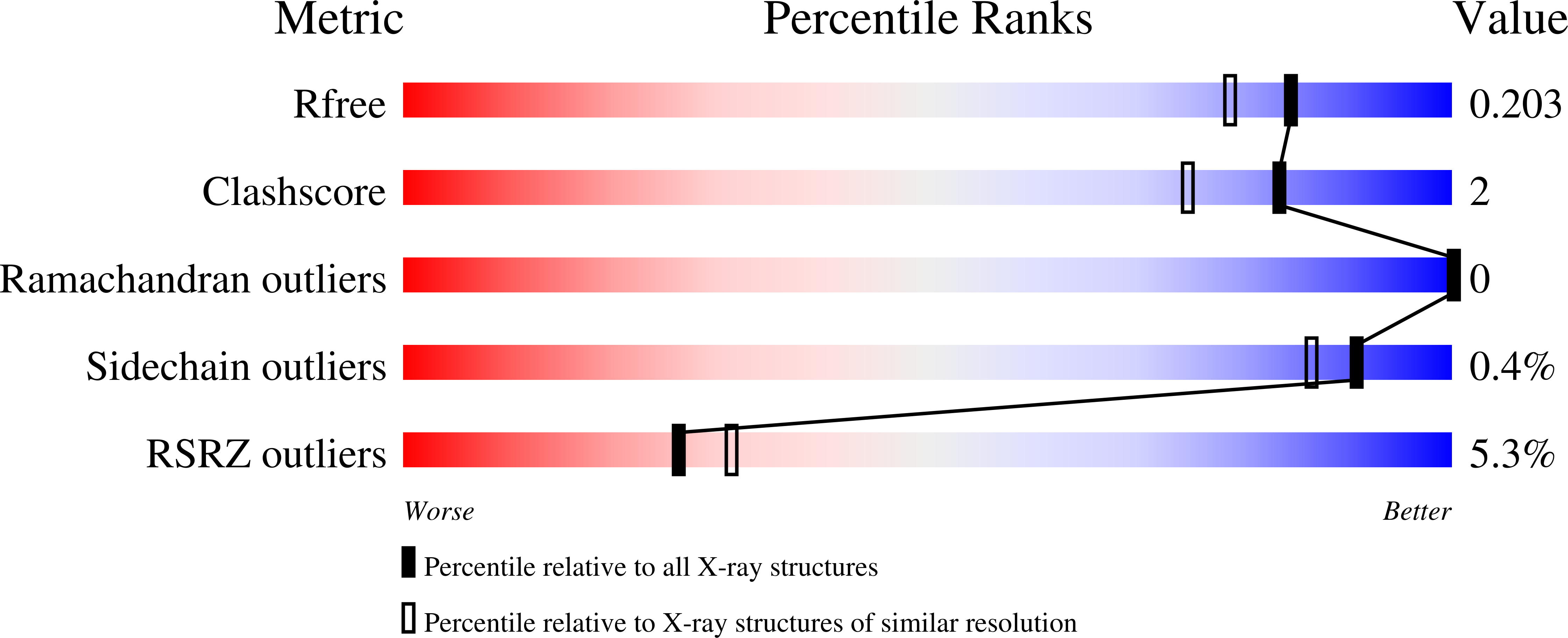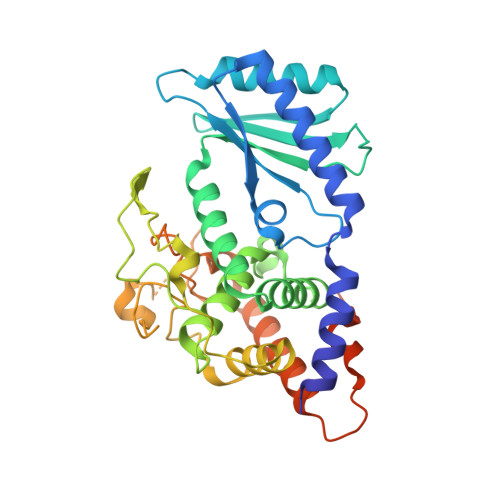Structural plasticity of Cid1 provides a basis for its distributive RNA terminal uridylyl transferase activity.
Yates, L.A., Durrant, B.P., Fleurdepine, S., Harlos, K., Norbury, C.J., Gilbert, R.J.(2015) Nucleic Acids Res 43: 2968-2979
- PubMed: 25712096
- DOI: https://doi.org/10.1093/nar/gkv122
- Primary Citation of Related Structures:
4UD4, 4UD5 - PubMed Abstract:
Terminal uridylyl transferases (TUTs) are responsible for the post-transcriptional addition of uridyl residues to RNA 3' ends, leading in some cases to altered stability. The Schizosaccharomyces pombe TUT Cid1 is a model enzyme that has been characterized structurally at moderate resolution and provides insights into the larger and more complex mammalian TUTs, ZCCHC6 and ZCCHC11. Here, we report a higher resolution (1.74 Å) crystal structure of Cid1 that provides detailed evidence for uracil selection via the dynamic flipping of a single histidine residue. We also describe a novel closed conformation of the enzyme that may represent an intermediate stage in a proposed product ejection mechanism. The structural insights gained, combined with normal mode analysis and biochemical studies, demonstrate that the plasticity of Cid1, particularly about a hinge region (N164-N165), is essential for catalytic activity, and provide an explanation for its distributive uridylyl transferase activity. We propose a model clarifying observed differences between the in vitro apparently processive activity and in vivo distributive monouridylylation activity of Cid1. We suggest that modulating the flexibility of such enzymes-for example by the binding of protein co-factors-may allow them alternatively to add single or multiple uridyl residues to the 3' termini of RNA molecules.
Organizational Affiliation:
Division of Structural Biology, Wellcome Trust Centre for Human Genetics, University of Oxford, Roosevelt Drive, Oxford OX3 7BN, UK.















